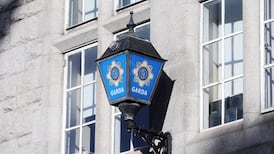Although figures rise and fall, these latest statistics show perceptions of a recent rise in violent street crime have not been misplaced, writes Joe Humphreys
Following recent gloomy reports on the economy and inflation, the Government received more bad news this week, this time on crime.
The figures sent last Wednesday by the Garda Commissioner to the Minister for Justice, Equality and Law Reform, Mr McDowell, show reported crime increased last year by 18 per cent compared to 2000.
In each of 10 "headline" categories, from homicide to burglary, increases were recorded. Assaults and sexual offences almost doubled in number.
On publication of a summary of the findings yesterday, the Minister expressed his "deep concern" at the upward swing, which he said marked a significant reversal of the trend of reduction over the past five years.
The figures themselves, however, could not have come as much of a surprise to the Government.
Mr McDowell's predecessor, Mr O'Donoghue, admitted in an RTÉ interview last January that he had obtained approximate crime figures for 2001 but had chosen not to publish them.
Opposition parties then accused him of withholding information which might have been damaging to the government ahead of the general election.
Significantly, the Garda Commissioner said, in a briefing to the Minister accompanying the figures, that they were only obtained in mid-July, and as such may be subject to change before publication of the Garda annual report.
Whatever the rights and wrongs of the issue, the Taoiseach, Mr Ahern, was not stopped from trumpeting Fianna Fáil's "success" in cutting crime by 27 per cent since 1997 at his party's ardfheis last March.
"We have promised to cut crime by getting tough on criminals. We have done just that," Mr Ahern said.
While the latest figures take something of the gloss off the Government's short-lived "zero tolerance" policy, they shouldn't necessarily be viewed as a stick to beat the Government with.
As criminologists have been pointing out for years, crime rates rise and fall periodically, and frequently in defiance of proposed counteracting measures.
In both 1983 and 1995, for example, the number of recorded indictable crimes peaked at more than 100,000, only to fall off again without any clear explanation.
The figures published yesterday are not directly comparable, as they are compiled under a different, and supposedly more accurate, accounting method using the Garda PULSE computer system. Nonetheless, they suggest crime rates have not reached epidemic proportions.
The Garda Commissioner underlined the point, in his briefing to the Minister, saying: "While the number and range of serious criminal offences has increased substantially during the intervening years, the total number has not increased significantly compared to 15 years ago."
At 86,621, the number of recorded headline offences last year is, indeed, within the same range as previous years. However, the only accurate comparison is with 2000, the first year in which the PULSE system was used.
In that year, there were half the number of assaults, and 886 fewer sexual offences.
Such statistics illustrate how perceptions of a recent rise in street crime were not misplaced.
According to the data, the number of reported assaults causing harm increased by 85 per cent last year to 3,150. The number of reported assaults, or obstructions of peace officers increased by 130 per cent to 238, and the number of reported abduction cases increased by 165 per cent to 82.
It was not all bad news, however.
Reported aggravated burglary fell by 23 per cent to 349 cases last year. The number of reported manslaughter and attempted murder cases also fell by 10 and 11 cases respectively, although the number of reported murder cases rose by 13 to 52.









